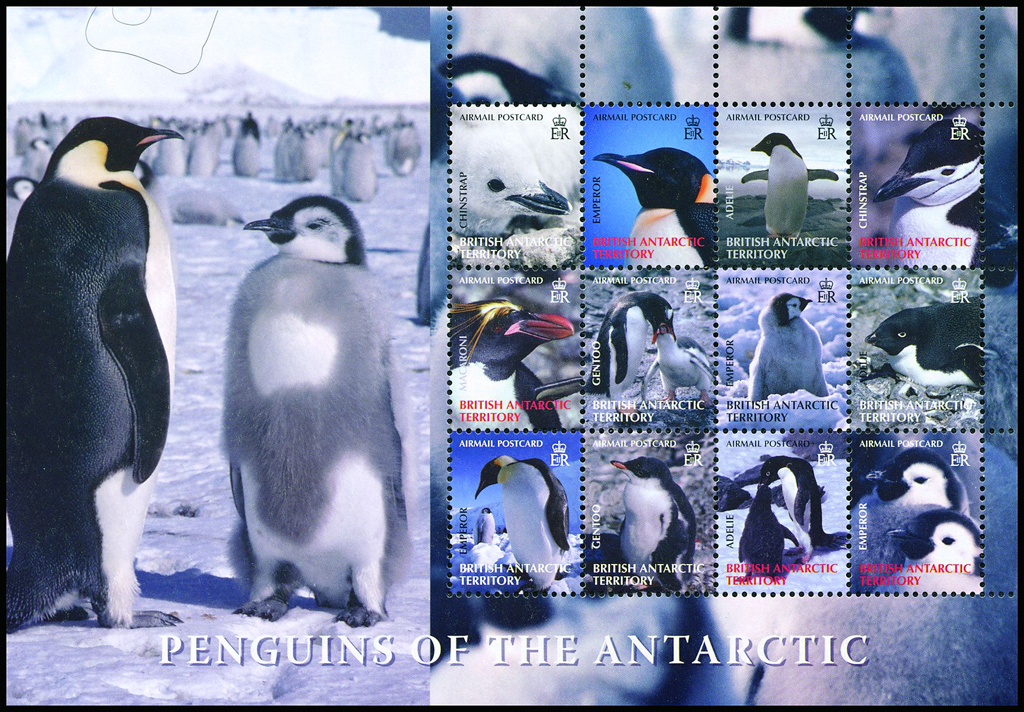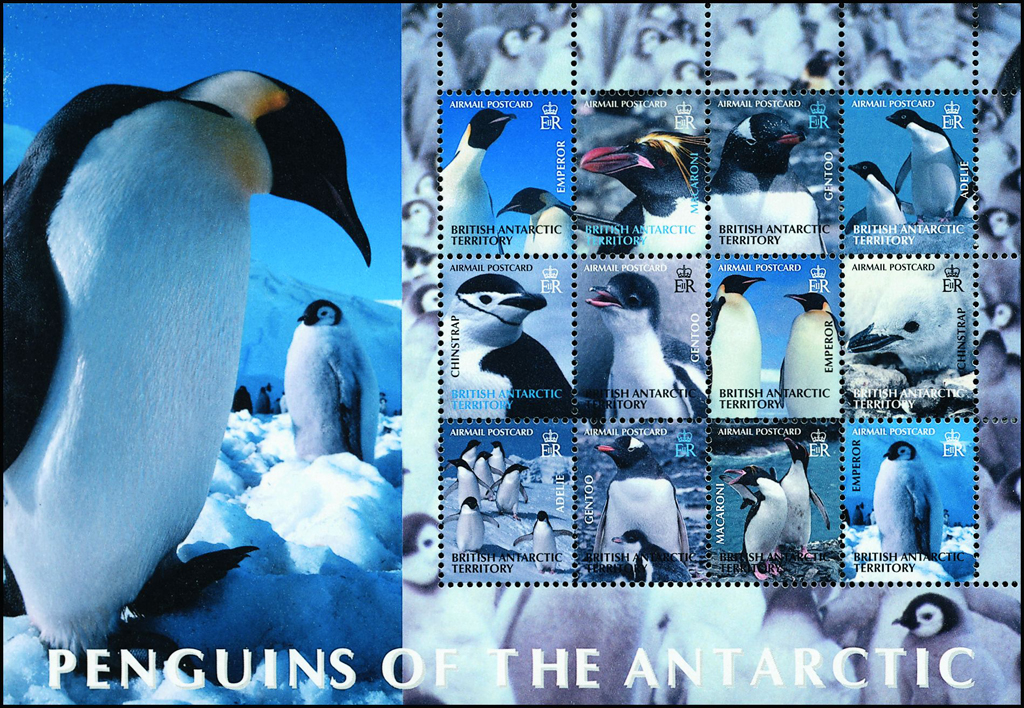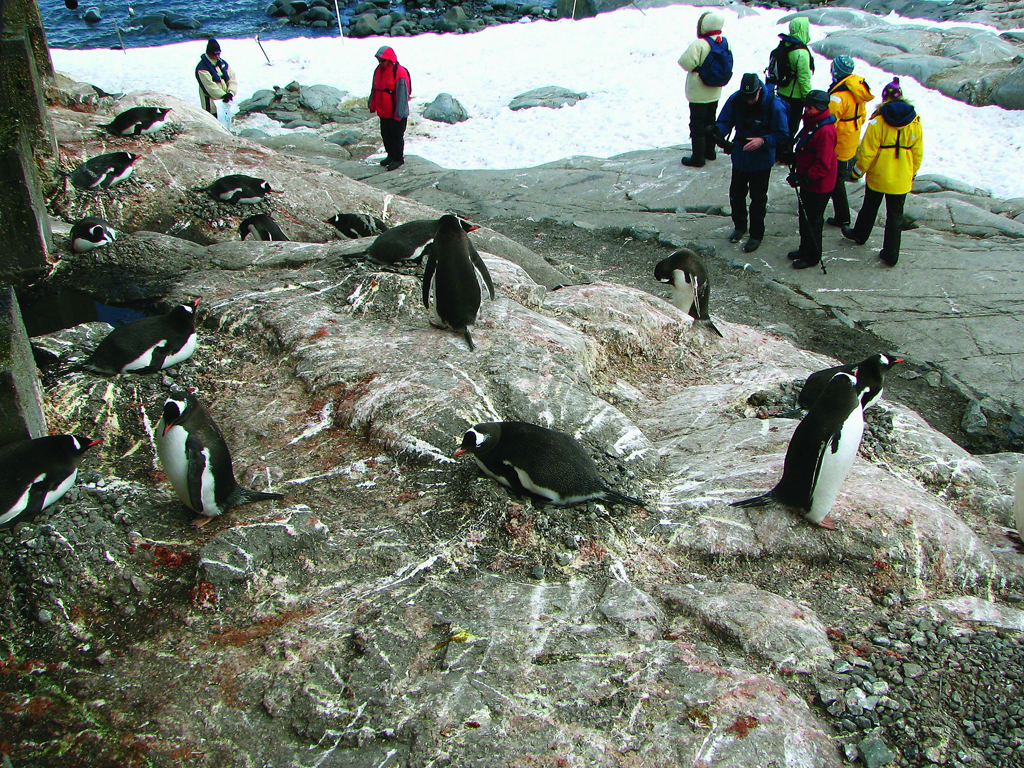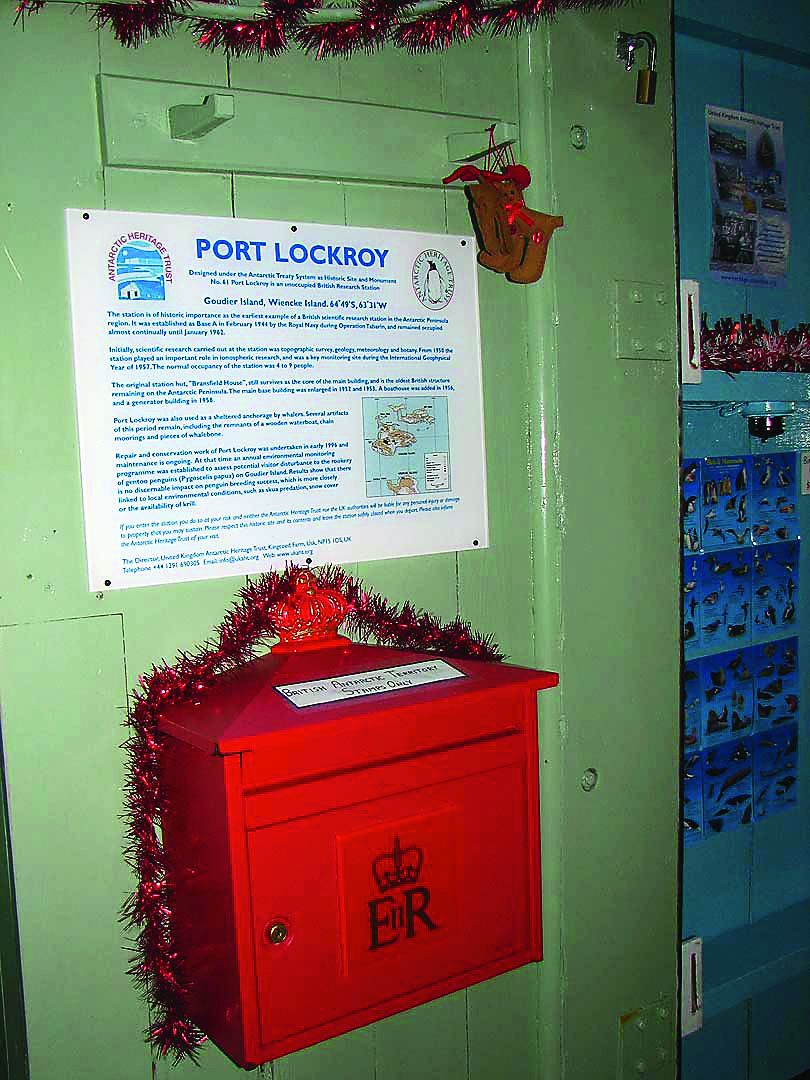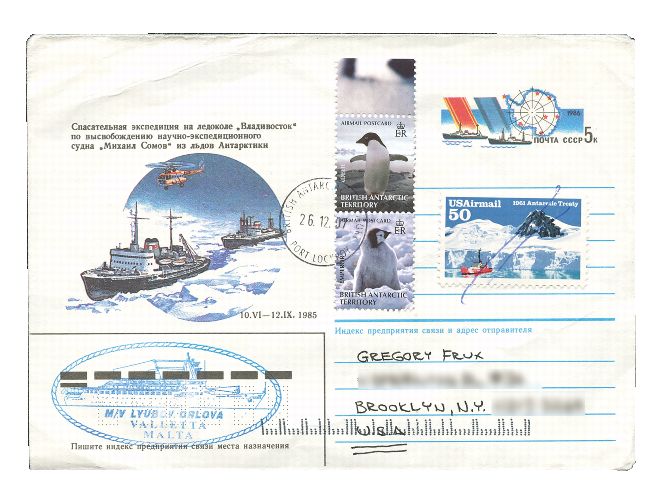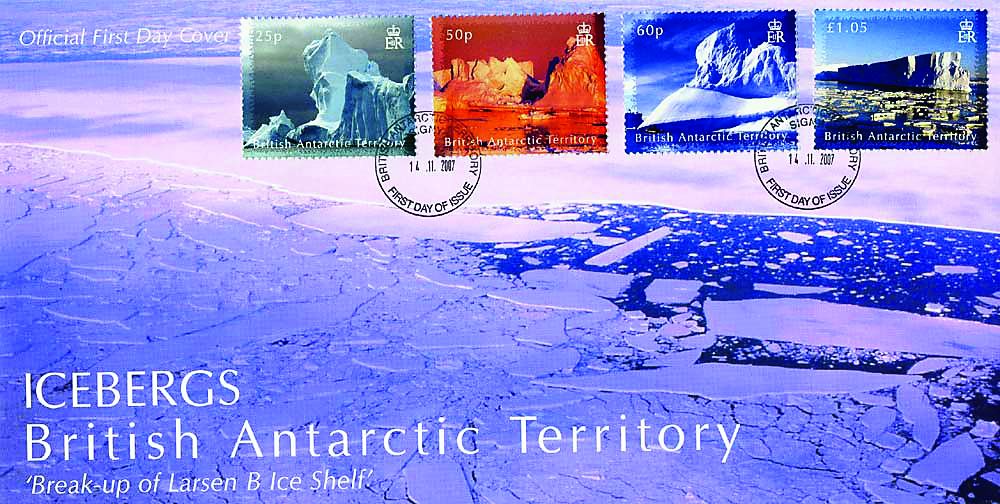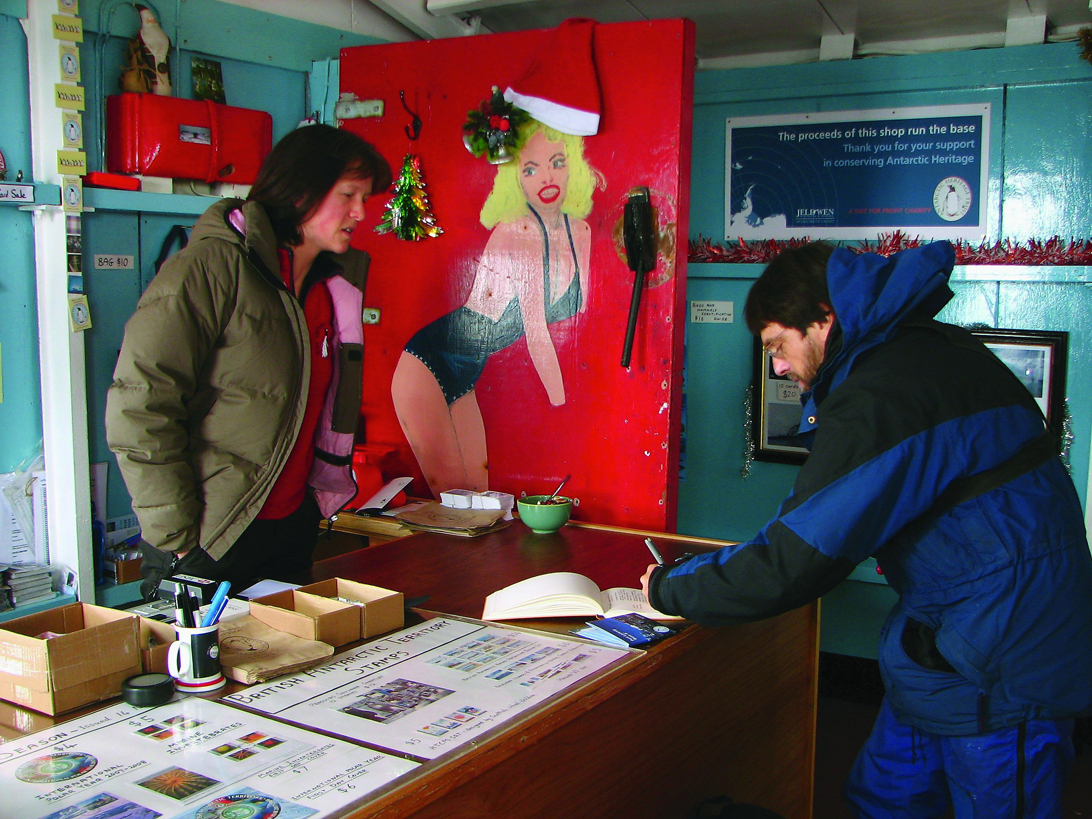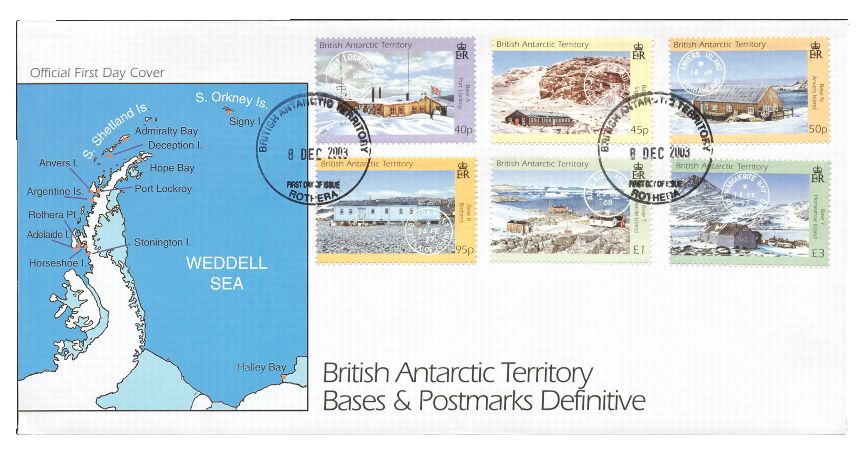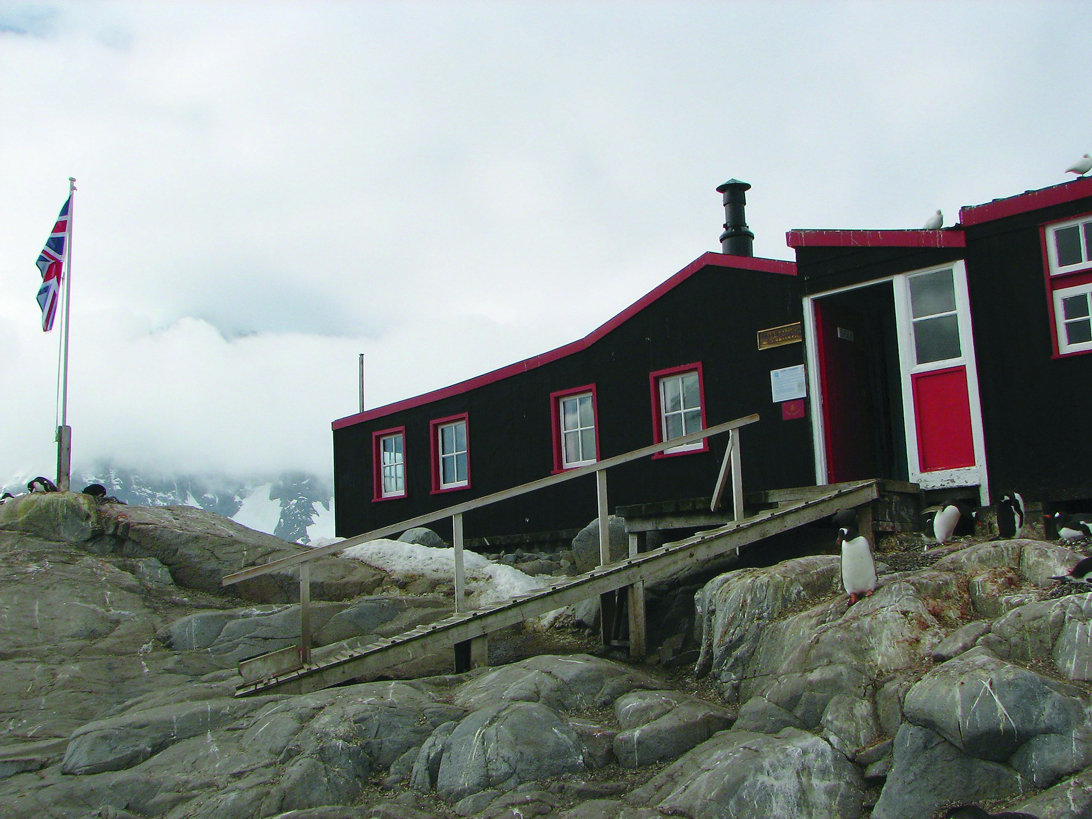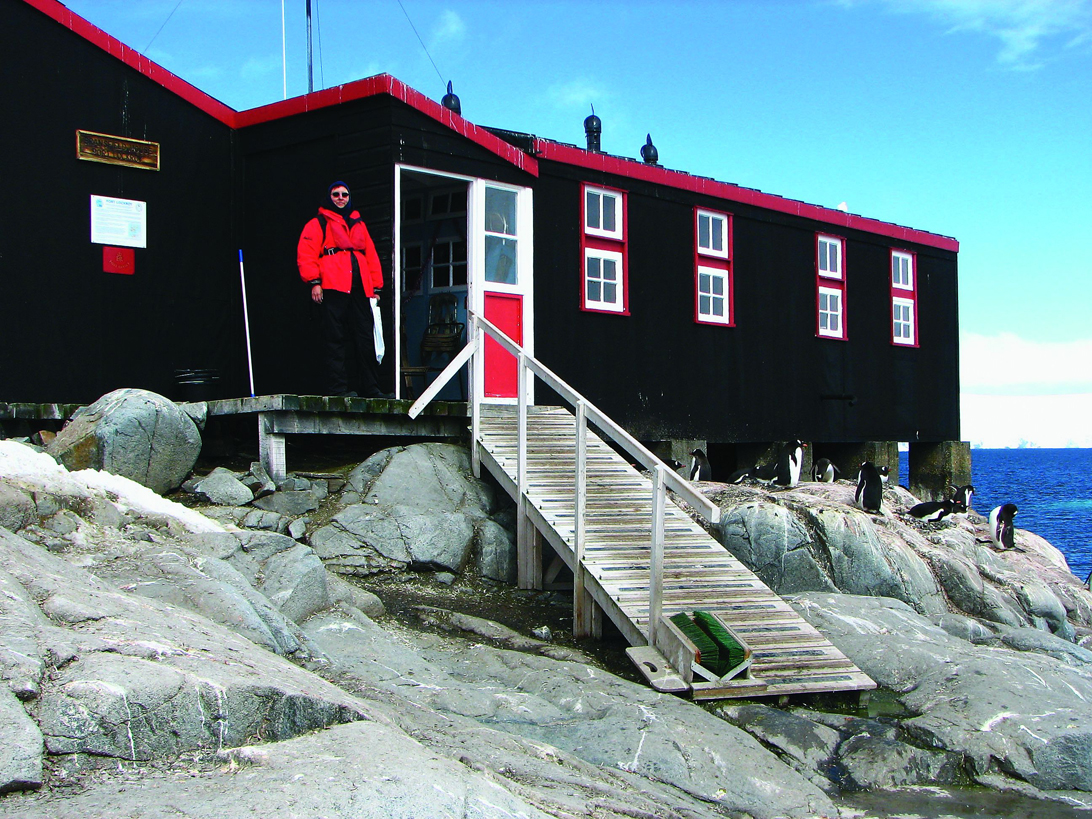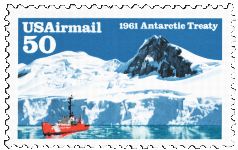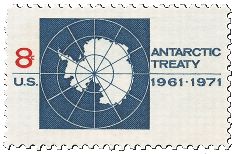World Stamps
Stamps and covers emerge from the frozen land of Antarctica
This article first appeared in the September 2008 issue of Scott Stamp Monthly.
On a tiny island in a bay surrounded by massive glaciers sits the British Antarctic Station at Port Lockroy. This remote site offers much for stamp collectors, including a variety of stamps and postmarks.
Port Lockroy is designated as Historic Site and Monument No. 61 under the Antarctic Treaty, and the base consists of a single building that houses a museum and visitors' center, living quarters and one of the most active post offices in Antarctica. The station is staffed during the southern summer, from November through mid-March, by a three-person team.
Nearly ever day during the season, cruise ships anchor nearby, and passengers disembark via zodiac rafts to visit the exhibitions, to shop in the gift shop and to mail correspondence. Port Lockroy welcomes nearly 17,000 visitors and handles 80,000 postcards and letters annually.
The harbor was used by whalers during the first half of the 20th century, and evidence remains in the form of rusting chain and whale bones.
Modern history of the site began during World War II, when the British government initiated Operation Tabarin, a secret program to set up bases on the Antarctic Peninsula and nearby islands. The operation's stated mission was to monitor enemy activity and file weather reports. In addition, these bses advanced British territorial claim in a portion of Antarctica that also was claimed by Chile and Argentina.
Base A Port Lockroy was built on Goudier Island in February 1944 and was occupied by a nine-man team. When the war ended, the base was handed over to the civilian administration of the Falkland Island Dependencies Survey.
The first mail from this base was postmarked February 11-14, 1944, and was canceled "Falkland Islands Dependence Graham Land." The cancellations were applied in the lounge of the SS Fitzroy, because the onshore post office wasn't operational until March 23, 1944. Originally, stamps from Falkland Islands were overprinted "Graham Land" (Scott 2L1-2L8). These were superceded by Falkland Islands Dependencies issues beginning in 1946 and by British Antarctic Territories stamps in 1963. The first cancels reading "Port Lockroy, Grahamland" appeared in 1953.
Research on the upper atmosphere took place at this location. The base remained in operation until February 1962, when it was shut down and abandoned.
In 1996, the British Antarctic Survey began a restoration process, both to rehabilitate the historic site and remediate environment damage. Port Lockroy's facilities — kitchen, radio room, upper atmospheric research facilities and recreation room — have been lovingly restored to the 1950s-era ambience, down to the period cans of beans and lard in the pantry. This museum has become a very popular destination for cruise ships touring the Antarctic Peninsula.
The friendly post office is an important part of the experience, and funds from sales of stamps and covers help pay for maintenance and operation of the station. Postage is simple: U.S. $1 for postcards and $2 for letters. These rates likely were initiated to simplify money handling and to avoid having to deal with coins.
Considering its remote location, a good selection of British Antarctic Territory stamps and covers were available when I visited Port Lockroy. One example I purchased was a first-day cover with four denominations of Iceberg stamps on an unusual cacheted envelope. This cover was robustly packaged in water resistant materials, a good idea considering it had to arrive in a small inflatable boat.
A letter I posted December 26, 2007, from Port Lockroy arrived at my home in Brooklyn, New York, January 22, 2008. I used a Soviet-era aeogram that bears a Valletta, Malta, ship marking for the Russian-built, ice-reinforced ship Lyubov Orlova. This is the Quark Expedition ship on which I traveled to Antarctica.
Two British Antarctic Territory airmail postcard-rate Penguin stamps from BAT's 2006 Penguins of the Antarctic sheet of 12 pay the letter rate. The stamps show an Adelie penguin (Scott C2c) and an Emperor chick (Scott C2g). I added the United States 1961 50¢ Antarctic Treaty airmail stamp (Scott C130) to the cover for decoration. A ship postmark cancels the BAT stamps.
The route the letter followed was by ship to Stanley in the Falkland Islands, by air to Great Britain and then on to New York. Mail service from Antarctica can take two weeks to six weeks, or even longer. A letter mailed at the end of the season might not be delivered until the following season.
Postmistress Helen Annan gives personal attention to all mail, hand canceling each card and letter. She reported that if she finds items posted without an address, she will attempt to match the handwriting to another letter in the batch and mail it to that address.
Despite the amenities, one cannot forget that this is an extremely remote station with limited resources. Staff is appreciative of the hospitality of passing cruise ships, which extend invitations to dinner and offer showers as well as good fellowship. As if to underline the station's remoteness, the staff lost its incoming mail, including presumably Christmas presents, when the ship Explorer sank in the South Shetland Islands November 23, 2007.
A classic and functional red mailbox is mounted in the entrance foyer to the base. Nearby is a notice board, an informal post that carries messages mailed between ships operating along the Antarctic Peninsula.
Port Lockroy looks remarable in its setting amid ice cliffs. It is a rare Antarctic safe harbor. Seven hundred pair of Gentoo penguins nest on Goudier Island, up to within five feet of the post office entrance. They do not appear at all to be disturbed by the close proximity to humans. It may be that people discourage the skuas, the predatory birds that steal penguin eggs and chicks.
Among the stamps available at Port Lockroy at the time of my visit were two sheets of 12 stamps titled "Penguins of the Antarctic." Five species of penguins found in Antarctica are illustrated on the first sheet issued December 8, 2003 (Scott C1): Emperor (Aptenodytes forsteri), Macaroni (Eudyptes chrysoophus), Adelie (Pygoscelis adeliae), Gentoo (Pygoscelis papua) and Chinstrap (Pygoscelis antarctica). All these species have been seen on Goudier Island, although Emperor and Macaroni penguins are rare visitors.
A second sheet of 12 stamps also available was issued November 8, 2006 (Scott C2), along with a booklet pane of 12 (Scott C3).
The inscription on the stamps sold at Port Lockroy reads "British Antarctic Territory."
Along with stamps issued by Australia, France and New Zealand, these stamps serve as de facto assertions of territorial claims on the Antarctic Continent. Yet, the Antarctic Treaty has suspended territorial claims and reserves the continent for peaceful purposes and scientific investigation. The treaty is considered a model of successful diplomacy and international cooperation.
The treaty has been honored on two United States stamsp: a 1971 8¢ issue (Scott 1431) and a beautiful 1991 50¢ airmail stamp (Scott C130) that celebrate the land's stark beauty.
Today, aside from a tiny human presense at places such as Port Lockroy, Antarctica remains vast, pure and pristine.
LINN'S STAMP NEWS COVERAGE OF PORT LOCKROY POST OFFICE:
http://linns.com/news/postal-news/1225/Post-office-in-Antarctica-focus-of-Nature-episode-on-PBS-%5BVIDEO%5D
MORE RELATED ARTICLES
Headlines
-
US Stamps
Oct 7, 2024, 3 PMMcMurtrie dismissed as APS education director following Sept. 21 arrest
-
US Stamps
Oct 7, 2024, 12 PMVasiliauskas named president of Mystic Stamp Co.
-
US Stamps
Oct 6, 2024, 5 PMApgar souvenir card available
-
US Stamps
Oct 6, 2024, 4 PMFirst Continental Congress and U.N. stamps receive Scott catalog numbers
